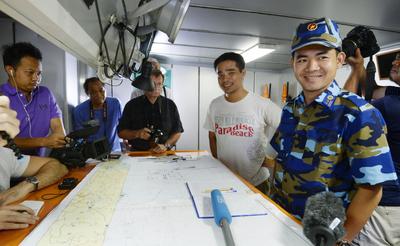Hong said that ‘companies concerned will map out [a] work plan for the next step based on analysis and assessment of the geological data that they have obtained’. China did not build the rig with the intention of leaving it idle, so it is highly likely that it will be deployed in the area again.
In addition, China has found the deployment of the rig a useful way of asserting its territorial claim. In late 2013, the two countries’ leaders reached an agreement on principles of peaceful management of the disputes in the South China Sea. The introduction of the oil rig, escorted by a flotilla of high-powered vessels — some of them armed — that rammed and used water cannons in the disputed zone, changed this. The show of force was unprecedented, but has become an accepted new norm for China, suggesting that this kind of incident will happen again.
There are other aspects of this situation that seem to indicate that China will be taking a more assertive posture in the future. One of these concerns the way that China has sought to deal with the crisis publicly. On 9 June, China introduced a position paper on the dispute to the United Nations Secretary General and asked that the paper be circulated among UN member states. In addition, several Chinese ambassadors have published op-eds in local newspapers, trying to make a case for the China’s actions at sea.
For the first time, China has departed from its usual approach of keeping territorial disputes with Vietnam in the South China Sea low key. China is now trying to turn international public opinion in its favour by providing its version of the facts and its interpretation of the history of the dispute. It is likely that such tactics will be used in the future.
And lastly, China has openly clarified its claim over the Paracels (known as Hoang Sa in Vietnam). The position paper of 9 June argues that there is a basis under the UN Convention on the Law of the Sea (UNCLOS) for such a claim by stating that:
The waters between China’s Xisha (Paracel) Islands and the coast of Vietnamese mainland are yet to be delimited. The two sides have not yet conducted delimitation of the Exclusive Economic Zone and continental shelf in these waters. Both sides are entitled to claim EEZ and continental shelf in accordance with the UNCLOS. However, these waters will never become Vietnam’s EEZ and continental shelf no matter which principle (on international law) is applied in the delimitation.
This leaves open the possibility that China might claim a 200-nautical-mile EEZ for the Paracels. And if China presses such a claim, then the rig could potentially be deployed in a much wider area.
The crisis ended with the implicit promise that the oil rig would return when China wanted it to and on its terms. This augurs badly. But this might allow breathing room for China and Vietnam, together with the international and regional communities, to work on plans to resolve these sovereignty issues peacefully. The upcoming bilateral discussions, especially at the ASEAN Regional Forum in August and the ASEAN Summit in November, at which China will participate, are the most important venues for such an undertaking.
Tung Nguyen is a Senior Researcher and member of the research program on the South China Sea (East Sea) at the Diplomatic Academy of Vietnam.
The views expressed in this article are the author’s own.

